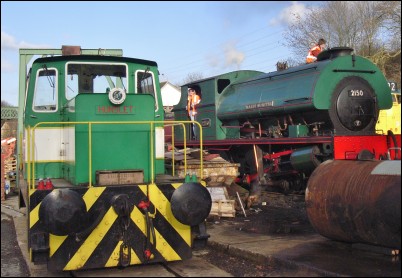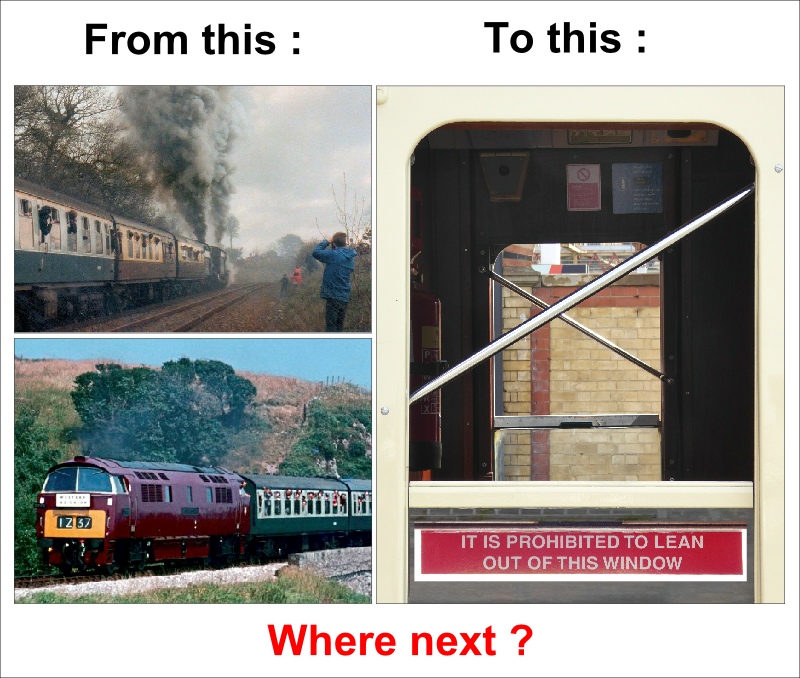Health and Safety Bollocks

Basically this page is about the long term historical trend of society to accept more and more restrictions on our lives in order to "keep us safe". The absolute apogee of this (so far....) was our response to Covid, a response the like of which had never before occurred in the 300,000 year history of our species. This trend of more restrictions has actually been with us since the early 1800s, though up till about the 1980s increasing health and safety was undoubtedly a good thing. Now, however, it has gone too far, and, most worryingly, the trend is not slowing down, if anything it is accelerating. I'm just pleased I grew up in the 1970s. Back then unless something was specifically prohibited it was assumed you could do it, but now it's almost the reverse, and sooner or later that will be the case.
My view is supported by Sir William Sargent who served as a permanent secretary of the Better Regulation Executive (tasked with reducing red tape = regulations) until 2009, he was quoted in The Times (26 Sept 22 p38) "the essential difficulty of removing or undoing regulation is that it increases risk, but society has been increasingly risk averse for at least a century".
More and more restrictions and regulations on our lives so that, ironically, we can just die of something else having had a less enjoyable (and certainly less adventurous) life.
Health and Safety Bollox : Railway Style
This is a story about "Health & Safety Bollocks" railway style, and ultimately it really is quite sad, in fact it almost brings a tear to my eye.......
I can remember when I was about twelve back in the mid 70s going with the school to the National Railway Museum at York. The NRM is fabulous and it was a great day out but in the afternoon there was an undoubted highlight that actually had quite an effect on the rest of my life. At that time there was a British Railways yard just at the side of the museum and a group of us were sitting watching an engine being worked there. After a short while the driver noticed us sat there and he descended from the cab, walked over to us and asked us if we wanted to go on the footplate! Naturally we all jumped at the chance and followed him up into the loco. It was fantastic as he showed us what everything did and how to start the engine, but it got even better when he asked us if we wanted to drive it! Alright it was only 50 yards or so but it was a wonderful experience for a group of lads, though I’m sure it would be a wonderful experience for most "grown ups" as well!
This incident helped to fire my enthusiasm for all things to do with railways and it had a similar effect on at least one of the other group of us. So why do memories of it make me feel a bit sad? Well it could never happen these days, and so that’s one more experience that the kids of today will never have. I’m sure if it did occur now the railwayman concerned would be sacked on the spot because it’d be considered a serious breach of "Health & Safety". At first sight it may seem to be, but if you think about it that’s bollocks, in fact it’s "Health & Safety Bollocks". You’d almost certainly be in far more danger crossing the bleedin’ road, and yet that is perfectly legal!
On the other hand the "Train Operating Companies" (how romantic that sounds.......) would probably consider it to be a waste of the drivers’ time, and therefore their money.
But that’s bollox as well.
I’ll tell you something, that railwayman knew more about public relations than all these students tumbling out of university with their "Marketing Science" degrees put together. I don’t even want to think how much I’ve spent on train travel etc over the years (most of which I probably wouldn’t have) had that BR driver not taken time out for a bunch of kids.
That’s it.
Remember every "Health & Safety Bollocks" ruling has a cost somewhere along the line, even if it’s "only" to deny people fabulous experiences that can change their lives......
Still, at least the kids of today have got their "Play Stations", though I’m sure there’s not one of them who would rather play a bleedin’ computer game than actually drive a train, well, not the normal ones anyway.
Actually, blaming Health and Safety (as in the Health and Safety Executive) is probably misguided. It’s the bleedin’ compensation culture, those parasite lawyers and people out to get something for nothing. Oh yes, and companies (and councils) using “Health and Safety” as an excuse to save money by withdrawing services, they're very good at that........
Health and Safety Bollocks, Railway Style (Pendolino Edition)

Question : What is the difference between the train on the left (in the above picture) , and the train on the right ?
(Hint, it's not the 1970s “Bay City Rollers” decor)
Answer : The tartan train interior is the original tilting train, the APT, it has a window area per coach of about 19 sq m. The other train is a West Coat Mainline Pendolino, its window area is about 10 sq m. One is bigger than the other by around 90% (that's ninety, as in nine zero percent).
Why?
Health and Safety Bollocks that's why!
Apparently the smaller windows make the Pendolino safer.
But the correct response to this is not: “Great, they're safer, I can now sleep more soundly at night”.
The considered response to this (and every Health & Safety edict) should be:
Exactly how much safer does it make me ?
And what am I sacrificing to achieve that ?
How safe do you want to be ? On average you are likely to die every two billion miles of travel on a British train, that's 2,000,000,000 miles. In fact as of 2019 there hadn't been any fatal rail accidents (passenger deaths) in 17 years - that's seventeen years. Smaller windows might improve your chances, maybe to 1 in 2,200,000,000? People who are sufficiently risk averse to think train travel is significantly dangerous should always sit with their back to the direction of travel because that would make a far bigger difference to their safety than smaller windows. More to the point, assuming they want to be consistent in their risk aversion, they should never drive, in fact they should never go on the roads at all, and they should also live in a bungalow......
Safe as (windowless) houses.
Left Picture : Virgin “Pendolino” (Bad Design On British Public Transport).
Right picture : East Midlands Trains “Meridian”

Actually Health & Safety really has gone into a post rational world. From 2023, even on heritage lines (maximum speed 25mph....) all windows will have to be lockable or barred to stop people putting their heads out of them. No more looking out around the coach, or at the steam engine working hard up the grade, one more regulation "to keep us safe" just because the odd person hasn't got two braincells to rub together and they must be protected from themselves at the expense of everyone else. How far is this all going to go ?

But don't smaller windows also help to prevent people being thrown out of the windows in a crash?
Well, maybe there's something in that argument because I have to say that I do like looking out of train windows at the sylvan British countryside, and it does actually annoy me when the view is obscured by the piles of bodies thrown from all these train windows, so yes, I could possibly go for that one.
On the other hand what are we losing? A nice light pleasant environment? Being able to actually see out of a train window? Dark Satanic Mills are so last century (or the one before), instead we're getting Dark Satanic Trains. That said, we must remember that there are some people who actually like claustrophobic interiors, but, on the other hand, is the percentage of agoraphobics in the population really that significant?
Are we throwing the baby out with the bath water? Assuming the window is big enough, obviously.
Health And Safety Bollocks : School Style
When I read chemistry experiments were under threat, particularly the "whizz bang" ones, because of Health & Safety Bollocks I couldn't believe it. That was the only interesting thing about chemistry wasn't it? Undertaking the experiments, especially the spectacular ones, was certainly the thing which fired up most pupils interest in the subject.
Good Lord, as far as I'm concerned you're not a proper school kid if you haven't got at least one accidental (or not....) acid burn mark on your school blazer.
Hold on, do they still wear blazers?
I'll rephrase that.
Good Lord, as far as I'm concerned you're not a proper school kid if you haven't got at least one accidental (or not....) acid burn mark on your school hoodie.
That article in The Times waits till the end to really score top marks for Bollocks.
A Head Teacher, Jane Lees (a former Head of Science, incredibly......) is actually quoted as saying that they've "moved on" from doing practical experiments. Next she almost gets enthusiastic when she opines that they've got "different ways of teaching now, with videos, the internet and virtual learning ! ". Fantastic ! ! Virtual Learning ! ! ! Didn't that used to be called watching it on TV ? Sounds like real fun to me.......
Finally, and almost unbelievably, she says, and this is a direct quote, this virtual learning is "just as interesting" (as actually doing the experiments). As far as I'm concerned if she thinks kids, or adults come to that, would really get just as much interest from watching an experiment on the internet, as actually doing it, she's got no business being a teacher. The alternative, which I don't believe for a second, is that the kids of today really would find it as interesting, in which case they're even sadder than I ever imagined. In fact one wonders for the future of the human race. Virtual sex doesn't make babies, or it didn't when I last checked, but they're damn clever these Chinese, so we'll just have to wait and see....
How Risky Is It ?
Below is a list which was originally printed in the Royal Statistical Society News (Oct 1998) as part of an article by Frank Duckworth. Frank is one half of the pair who invented the Duckworth Lewis scoring system in cricket. The list is an attempt to quantify risk by giving it a “risk number” equating to the probability of death.
These risk numbers vary by an order of magnitude and therefore are a logarithmic scale (e.g. for a risk number of 4 you would be 10 x more likely to die than a risk number of 3). The figures refer to the UK and are for a lifetime's exposure unless a specific time period is given.
0.3 = 100 mile rail journey
1.6 = Destructive asteroid impact (new born male)
1.7 = 1000 mile flight
1.9 = 100 mile car journey (sober middle aged driver)
4.2 = Rock climbing (one session)
4.6 = Homicide (new born male)
5.5 = Lifetime of car travel (new born male)
5.5 = Accidental falls (new born male)
6.3 = Rock climbing (over 20 years)
6.4 = Deep sea fishing (40 year career)
6.7 = Continuing smoking cigarettes (male aged 35: 10 per day)
7.1 =Continuing smoking cigarettes (male aged 35: 40 per day)
7.2 = Russian roulette (one game)
8.0 = Suicide (successful attempt ! )
Everyone knows how dangerous cigarettes are but notice how dangerous car travel is, did you know that the single biggest killer of teenage girls is their boyfriend's bad driving...... And I can't help laughing when I think of people who are so very concerned about the safety of their children they don't let them climb trees, and they worry about them when they're off on school trips, then you see them overtaking you whilst breaking the speed limit, with their kids in the back!
Driving is risky but so is the danger from falls. The use of stairs is a dangerous activity. I'm not being facetious about this, they really are risky! Bear in mind that this list is only giving a risk factor for death, if you include the risk of injuries I wouldn't be surprised if use of the stairs actually came top.
Nov 2020 addition : I found an old article in the Daily Telegraph (dated 5 Jan 2013) on a RoSPA report which stated that twice as many people die from "domestic trips" than in car accidents.....
Remember that when you casually trot downstairs carrying something with both arms, and read basic ladder safety......
On the other hand I wonder what would be the chance of death whilst being shown around a railway locomotive as in the tale above?
About the same as an asteroid impact?
That's Health & Safety Bollocks.......
In his article Frank wonders how different our attitude to risk would be if all illness was curable and they could stop the ageing process. To emphasise the point, if we could potentially live for ever, would we still indulge in risky activities?

